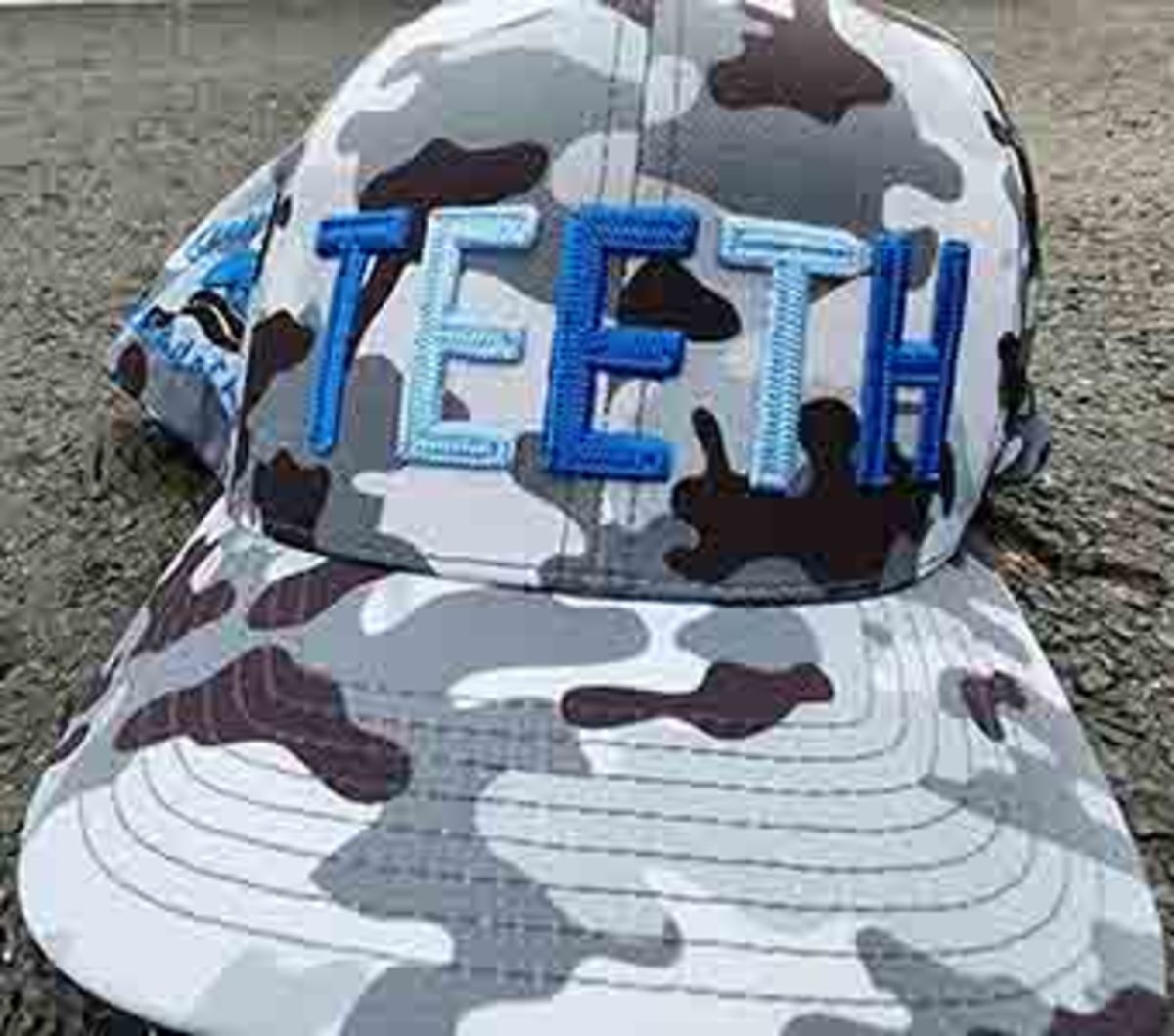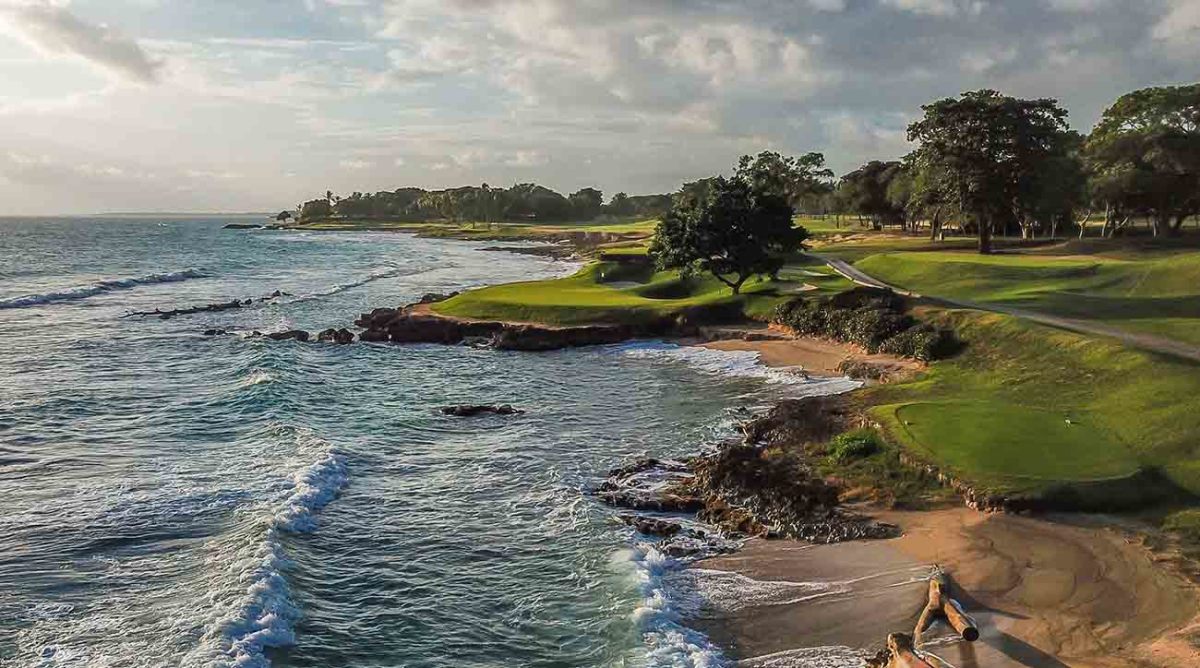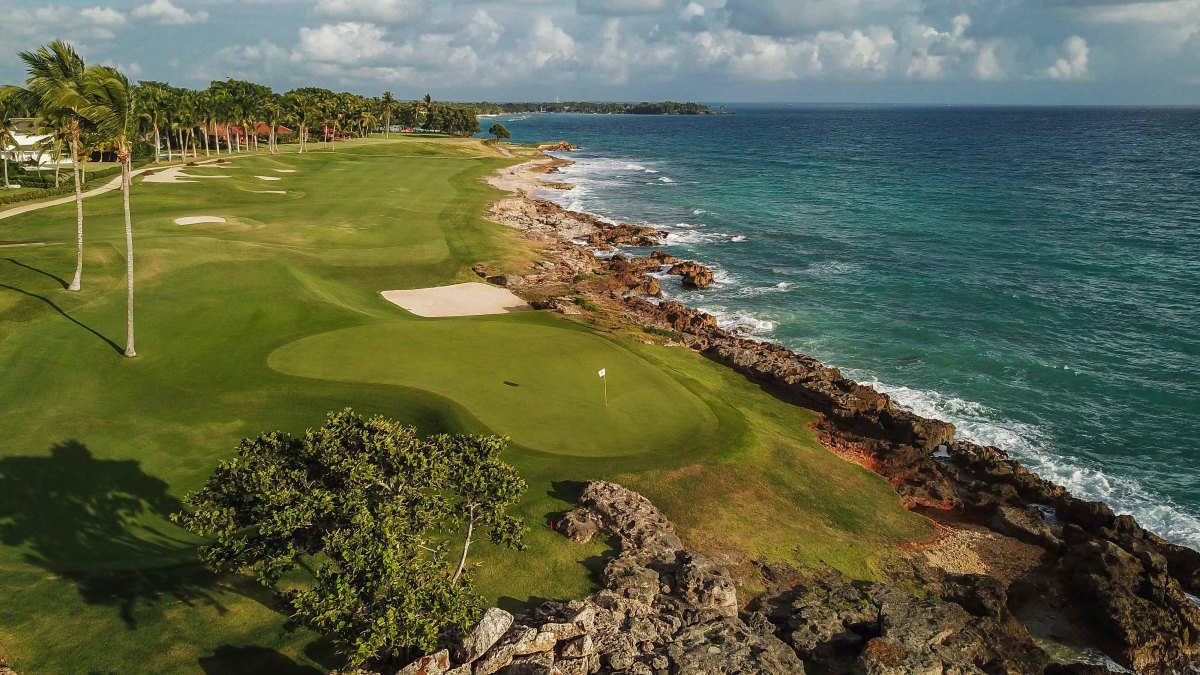One of Pete Dye's Favorite Courses Is a Seaside Paradise With Plenty of Bite

CASA DE CAMPO, Dominican Republic — By name alone, on a first visit to Teeth of the Dog you envision an entryway lined with scary, theme park-style big dogs accompanied by the soundtrack of “Darth Vader’s Theme” playing ominously in the background. At the laid-back golf shop, hats for sale screech out with “TEETH” or “DIENTE” wording on the front and the mirage of seven holes on the Caribbean Sea can be seen at a distance.
The entire Casa de Campo resort is gated and spread over nearly 7,000 acres, mostly on the coastline. The centerpiece is the Teeth of the Dog course, with three other nearby worthy tracks led by the extremely hilly Dye Fore, and the adjacent hotel that has multiple pools, amenities and restaurants. Every guest is issued a golf cart, which can be a bit NASCAR-like especially when the sun sets and there are carts and shuttles sharing the same roadways.

“The first time I came here in 2015 I couldn’t believe all that was going on here. It was jaw-dropping,” said Robert Birtel, Casa de Campo’s Director of Golf who moved from Puerto Rico and his native New Orleans eight years ago. “The first time I stepped on the (par-3) 5th tee, I was shocked. I was pretty unaware of what the Teeth of the Dog was like even though it had name recognition.”
Teeth encompasses approximately 40% of the resort’s annual rounds at a rate of $275 for hotel guests up to nearly $600 for off-resort play. A four-day, three-night all-inclusive trip (room, food and 54 holes of golf) in spring totals at just under $5,000 per person. That fee is focused on the name and landscape of possibly the most visually intimidating top-25 ranked course in the world. This is true despite for years getting lost in the shuffle due to a remote location on the Dominican Republic’s southern coast, now bettered by a four-lane highway that requires a swift 45-minute ride from the larger airports through miles of sugarcane fields. Sea spray and crashing waves on the coral-dominated coastline and anxious peeks from the golfer’s peripheral vision are enough to faze anybody taking on the course. Plus, the required white jumpsuit-clad caddies, all Dominicans, bring a luster to the Teeth experience.
Architect Pete Dye requires his usual assortment of shots when navigating the course in a front-nine clockwise and back-nine counterclockwise routing. On each nine, a series of less-dramatic inland holes whet your appetite before the water appears. The front nine is more publicized with water on the left beginning at the short, signature par-3 5th (168 yards maximum distance) where the tee juts into the water and the green pokes out, protected by rocks just off the left fringe, and is followed by two par-4s and a longer par-3. The back nine’s trio of water holes, playing left to right, are more formidable with two par-4s that have greens pushed out onto the beach and a par-3 that has a longer forced carry for Nos. 15 to 17.
However, the biggest mystery may be how the course was constructed atop rocks?
Pete Dye was coaxed to visit the Dominican Republic in the late 1960s by sugar manufacturing baron Alvaro Carta to build a destination to spur tourism to the Caribbean country. Dye discovered the seaside land that was desert like—poor soil quality too dry for growing sugarcane and too sparsely vegetated for raising cattle. He also happened upon a marketing dream as local workers called the coral formations “Diente del perro” (teeth of the dog in Spanish) to give the proper description and handle.

Dye faced challenges in construction. Machinery suited for sugarcane cultivation was the only available equipment as it was too expensive to ship from the States. The ground was composed of rocky red soil, scrub, coral rock, limestone and boulders. Dominican manpower and oxen were used as approximately 300 workers wielded sledgehammers, pickaxes and chisels to cut through the hard surface and often plant grass one sprig at a time. A large steel bar was tied to the back of a bulldozer to break up the coral. To obtain the proper soil, it required a trip to a location a mile away and a haul back to the course site in sugarcane carts pulled by oxen—one square yard at a time. Fresh water access had to be cut in from the nearby Chavon River and sand brought in from 50 miles away on the country’s northern coast.
Dye’s course opened in the fall of 1971 as the Caribbean’s top-rated course and he wintered here for decades, allowing him to constantly tweak. Dye thought so highly of the property that when he passed in 2020 some of his ashes were spread behind the devilish par-4 8th green near his homesite. A handful of tournaments have turned up over 52 years to shine some light on Teeth, including the 1974 World Amateur Team Championship (U.S. won both men’s and women’s titles, with the men’s team including Curtis Strange, Gary Koch, Jerry Pate and non-playing captain Hord Hardin, the future Augusta National chairman), the 1994 Shell’s Wonderful World of Golf exhibition between Fred Couples and Ray Floyd and the 2016, 2019 and 2022 Latin American Amateur. The course has stood the test, with the Latin Am winners breaking into double figures under par only once and the World Am medalist Pate finishing 6 over par.

But the challenge of keeping Teeth in the best condition has come to a head. In January 2025, the course will close for most of the year to undergo a complete regrassing. The greens and tees are now paspalum, a saltwater-tolerant grass. The course will be converted entirely to paspalum (currently the fairways and rough are bermudagrass), a la sister course Dye Fore and Kiawah Island’s Ocean Course. It will be the first extensive course work in 15 years. The course will be sand capped to give a better depth of soil and bunkers will be reworked to improve drainage. There will be minimal changes to Dye’s course features, except for lengthening a smidgen in a couple places—the course maxes out to 7,263 yards at par-72—notably a new back tee on the par-4 17th hole. Pate will keep tabs on the work as the Teeth’s architectural consultant.
“We will keep the integrity of Pete’s golf course and take in the maintenance that needs to be done,” Birtel said. “This work doesn’t come lightly. Ownership is in favor of it. They love their golf and are excited to make it a better product for everyone.”
To accommodate the golf demand in 2025, Dye Fore will incorporate nine holes from private La Romana Country Club to have 36 holes at that site and the country club will build a new nine. The Links course will remain the same.
The golf shop and adjacent Lago Grill, the hot spot for breakfasts and lunches, will also be leveled and rebuilt beginning this summer into a larger and more Caribbean style Birtel calls “a statement piece for Casa de Campo with a series of buildings, terraces, gardens and an ode to Pete Dye throughout.”
The resort (www.casadecampo.com.do) opened 53 new hotel rooms at the end of 2022 and debuts a new spa facility across from the hotel in mid-May.
Also, on the docket beyond 2025 will be building a par-3 course near the inland Links Course, with the concept of a bar area that also overlooks currently existent polo fields on a 12-to-15-acre location. A large, Himalayas-style putting green near the Teeth of the Dog is also in the plans, in time for a possible fourth rendition of the Latin American Amateur later this decade.
“We’re all excited about the possibilities,” Birtel said. “We’re just looking to get us ready for the next 25 years.”
